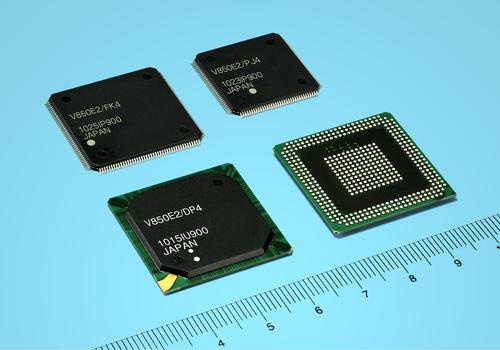MCU Vendors Tackle Electronic Safety
September 21, 2011

Electronic failure is a subject engineers always fret about but seldom discuss.
Unfortunately, it's a phenomenon that all too easily occurs. Bits conflict, data gets corrupted, and software programs can be influenced in sudden, unpredictable ways. What engineers don't want is for those unpredictable events to wrestle control away from an automotive steering system or an industrial stamping press.
"We can't prevent bits from being flipped," Mathieu Blazy-Winning, functional safety lead for the microcontroller solutions group at Freescale Semiconductor, said in an interview with Design News. "There's always a residual risk. But we can make our technology as robust as possible, so that it can deal with the unexpected."
Indeed, electronics suppliers are increasingly attempting to deal with the unexpected flipped bit. On Tuesday, Freescale rolled out a program called SafeAssure, which is targeted at the automotive and industrial markets. The announcement, made at this week's Freescale Technology Forum in Japan, followed on the heels of a broad safety hardware introduction from Texas Instruments last week. Similarly, Infineon Technologies rolled out safety designs in March, and Renesas Electronics did the same late last year.

Programs and products such as those are growing more important as OEMs ratchet up their dependence on electronic control. "It's key, as we know, because electronics can randomly fail," Blazy-Winning told us. "And given that we know electronic systems can malfunction, we have to make sure that those malfunctions don't put people's lives at risk."
Freescale's rollout targets ISO 26262, an automotive safety standard that will be published late this year, and IEC 61508 Edition 2, an existing standard aimed at industrial automation. The automotive standards are considered especially significant because automakers are increasingly using electronics to control the stability and steering of vehicles. Standards such as ISO 26262 will enable the development of electronic systems that can prevent dangerous failures. In automotive steering, for example, a fail-safe system would prevent the electronics from overriding the driver's actions in an unsafe way. It might also prevent an airbag from going off at the wrong time. The idea, engineers say, is not only to prevent dangerous failures, but also to control them when they do occur.
Freescale's new program makes it easier for designers to achieve compliance with the new standards. Some of the company's hardware -- including microcontrollers, power management ICs, and sensors -- now incorporate self-testing, monitoring, and hardware-based redundancy aimed at promoting safety. Analog products, meanwhile, provide for the checking of timing and voltages. And the company is rolling out software to help with safety system integration.
The technology is aimed at two types of failures: systematic failures, which can only be eliminated by changing a design or manufacturing process, and random hardware failures, which can occur unpredictably over the lifetime of a device.
Freescale isn't alone in its rollout. On September 6, TI unveiled a platform of 34 microcontroller units (MCUs) aimed at safety-critical apps. Infineon recently rolled out a design package aimed at functional safety for embedded products that use the IEC 61508 standard. And in November, Renesas introduced an automotive product family that includes safety MCUs for chassis, dashboard, body, and car audio applications.
"As a technical community, we're probably going to see people latch on to this," Adib Ghubril, research director for the semiconductor group at Gartner Inc., said in an interview with Design News last week. "The technical community has certainly latched on to security MCUs."
Dev Pradhan, safety MCU product line manager for TI, said: "Systems need to be able to handle random, unpredictable failures. Safety products have built-in features that help manage those unpredictable situations."
About the Author(s)
You May Also Like



